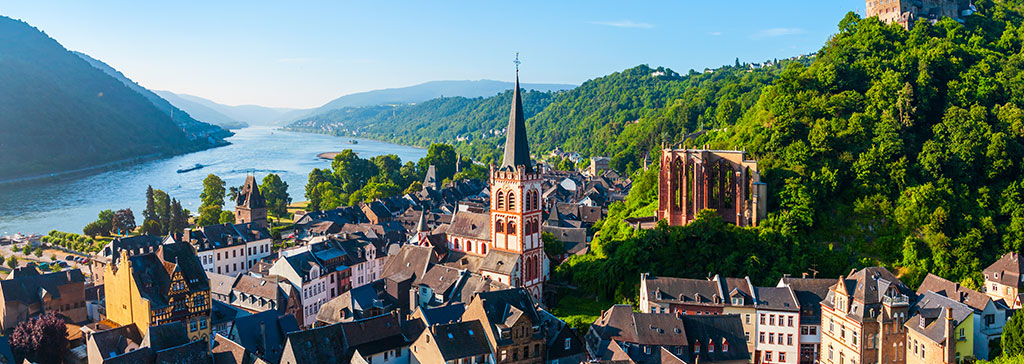
8 incredible UNESCO sites in Europe
UNESCO stands for the United Nations Educational, Scientific, and Cultural Organization. Since 1946, they’ve been recognizing key landmarks around the world that are important to the collective interests of humanity. UNESCO sites can be anything from archeological remains to natural splendor. But one thing is certain – when you’re lucky enough to lay eyes on them, you’ll know you’re witnessing something very special.
Ruins of Peompeii - Italy
Ash from the nearby Mount Vesuvius submerged the small Roman town of Pompeii back in 79 AD. The residents all perished in the natural disaster. Archeologists still to this day spend many hours in the hot sun excavating immaculately preserved artifacts. You can take a fascinating walk through history in this easy day trip from Naples.
Good to know: Ignore all of the ticket touts, fake tourist information booths, and roaming assistants. You can buy your ticket directly from the official entrance gate.

Palace of Diocletian - Croatia
While walking the streets of Split it’s not uncommon to feel like you’ve stepped onto a working movie set. This is because you’re shuffling through the ruins of Diocletian’s Palace – which was built between the 3rd and 4th century AD. Within the walls of the Old Town you’ll stumble across several protected sites, including cathedrals and palaces in Gothic, Baroque, and Renaissance styles.
Good to know: You’re just a short bus ride away from another one of Croatia’s epic UNESCO sites – the Old City of Dubrovnik. It’s a few hours south, further along the coast.

Bruges - Belgium
The beautiful city of Bruges is an excellent example of a medieval historic settlement, even as it has evolved over the hundreds of years since its founding. As such, UNESCO deems this worthy of World Heritage status. After a quiet walk around the atmospheric streets at dusk, it’s highly likely that you’ll be in full agreement of Bruges’ status.
Good to know: It’s easy to reach Bruges and race through it as a day trip. But nothing beats hanging around until after dark in this fascinating city.

Prague - Czech Republic
Prague is another famous European city that UNESCO deems a heritage site. Although it tends to be overrun by tourists plodding the streets, trying to see what all the fuss is about, once you get there you’ll see for yourself. The various monuments and dramatic architecture, some of which dates back to the 11th century, all contribute to the magic of the historical center.
Good to know: You can easily combine Prague with another beautiful UNESCO site – Český Krumlov is just three hours south.

Palace of Versailles - France
The Palace of Versailles has served as the principal residence of several French kings since Louis XIV. As each subsequent resident commissioned his own additions to the already ornate palace, so too did it increase in size and grandeur. Although no longer a royal residence, the palace and its gardens have lost none of their splendor. A day trip from Paris is a must if you’re visiting the French capital.
Good to know: The palace isn’t open every day of the year. Check the Versailles website before making the trip out there.

Bernina Exress - Switzerland
If you’d prefer to ride on your UNESCO site, then hop aboard the Bernina Express train between Switzerland and Italy. UNESCO named this a heritage site due to the impressive use of rail to overcome isolation between settlements in the Central Alps. This epic train ride offers more than just dramatic scenery. The full length of the route also takes you on a fascinating journey through more than 50 tunnels and over close to 200 bridges and viaducts.
Good to know: The panoramic train with floor-to-ceiling windows requires additional reservation fees, but your Eurail Pass covers you for the regular regional trains that also operate on this route.

Upper Middle Rhine Valley - Germany
Germany’s Rhine Valley is another World Heritage Site with close ties to rail travel. The 65 kilometer stretch of the Middle Rhine Valley takes you through some of the most fascinating towns and villages in all of the continent. From the comfort of your carriage you’ll spot castles, vineyards, and historic villages. They each neatly illustrate the long history of human presence in this picturesque location.
Good to know: Read our guide on traveling between Mainz and Cologne for details on making the most of this route.

The Alhambra - Spain
The Alhambra perches on a beautiful hill above Granada’s modern city as if part of an ancient fairytale. This beautiful former fortress and residence, along with magnificent gardens, dates back to 13th century. Thousands of tourists make the pilgrimage here each year. Despite this, it still has a captivating charm that makes it thoroughly deserving of its UNESCO status.
Good to know: Tickets sell out long in advance, particularly during the peak seasons. Book ahead online to make sure you get in. If you don’t manage to get tickets, or even if you do, then walk up to the neighboring Heritage Site of Albaycín at sunset for unbeatable views.

Change of currency
You cannot change the currency once you have a Pass in your cart. Remove the Pass, and then change the currency on the website header.









